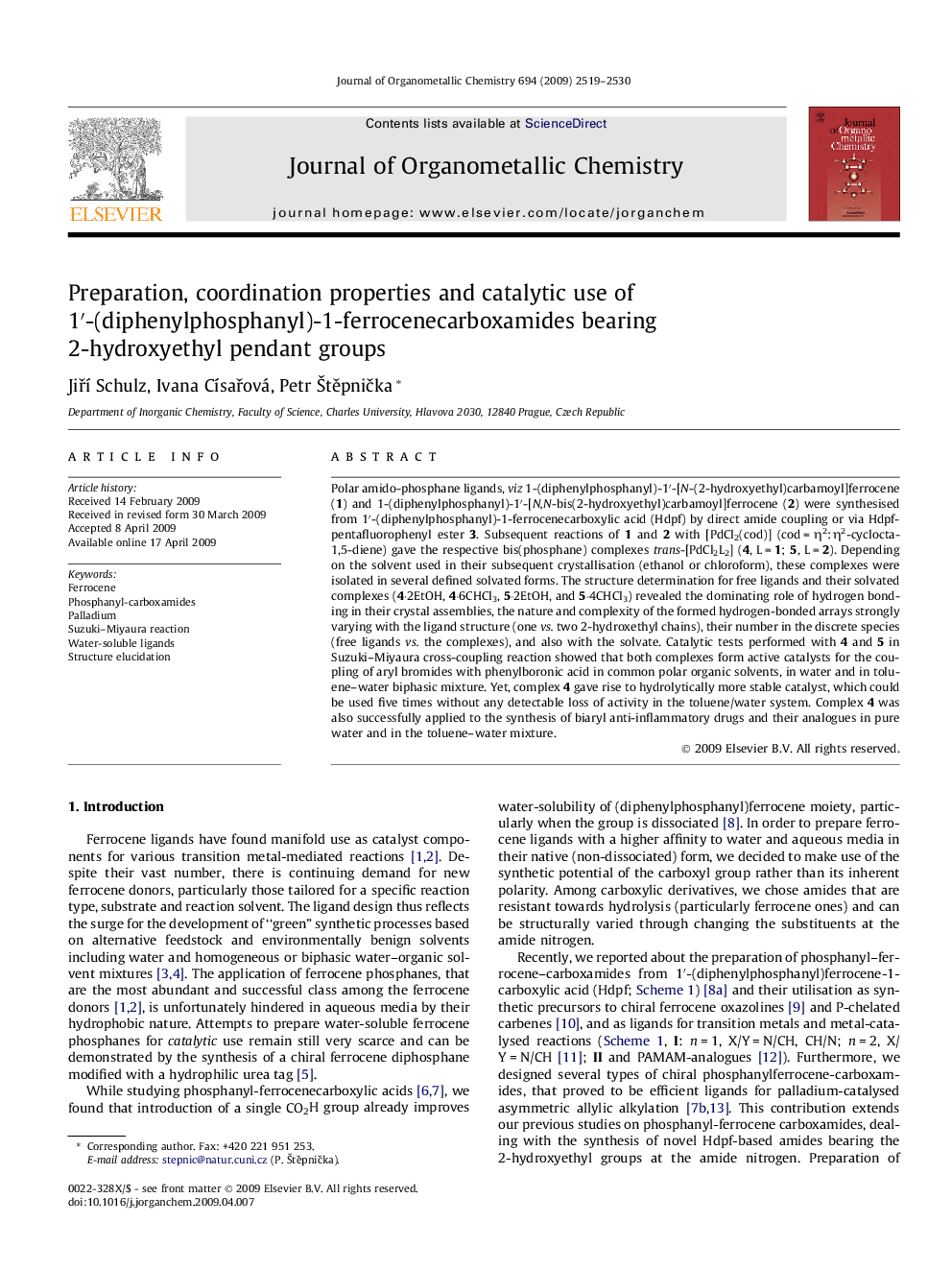| کد مقاله | کد نشریه | سال انتشار | مقاله انگلیسی | نسخه تمام متن |
|---|---|---|---|---|
| 1327399 | 977480 | 2009 | 12 صفحه PDF | دانلود رایگان |

Polar amido-phosphane ligands, viz 1-(diphenylphosphanyl)-1′-[N-(2-hydroxyethyl)carbamoyl]ferrocene (1) and 1-(diphenylphosphanyl)-1′-[N,N-bis(2-hydroxyethyl)carbamoyl]ferrocene (2) were synthesised from 1′-(diphenylphosphanyl)-1-ferrocenecarboxylic acid (Hdpf) by direct amide coupling or via Hdpf-pentafluorophenyl ester 3. Subsequent reactions of 1 and 2 with [PdCl2(cod)] (cod = η2:η2-cyclocta-1,5-diene) gave the respective bis(phosphane) complexes trans-[PdCl2L2] (4, L = 1; 5, L = 2). Depending on the solvent used in their subsequent crystallisation (ethanol or chloroform), these complexes were isolated in several defined solvated forms. The structure determination for free ligands and their solvated complexes (4·2EtOH, 4·6CHCl3, 5·2EtOH, and 5·4CHCl3) revealed the dominating role of hydrogen bonding in their crystal assemblies, the nature and complexity of the formed hydrogen-bonded arrays strongly varying with the ligand structure (one vs. two 2-hydroxethyl chains), their number in the discrete species (free ligands vs. the complexes), and also with the solvate. Catalytic tests performed with 4 and 5 in Suzuki–Miyaura cross-coupling reaction showed that both complexes form active catalysts for the coupling of aryl bromides with phenylboronic acid in common polar organic solvents, in water and in toluene–water biphasic mixture. Yet, complex 4 gave rise to hydrolytically more stable catalyst, which could be used five times without any detectable loss of activity in the toluene/water system. Complex 4 was also successfully applied to the synthesis of biaryl anti-inflammatory drugs and their analogues in pure water and in the toluene–water mixture.
Polar ferrocene amido-phosphane ligands 1 and 2, readily available from 1′-(diphenylphosphanyl)-1-ferrocenecarboxylic acid (Hdpf), are suitable ligands for the preparation of defined and structurally variable hydrogen-bonded coordination arrays. Palladium complexes involving ligands 1 and 2 efficiently catalyse Suzuki–Miyaura cross-coupling in polar organic solvents, their aqueous mixtures, and in water.Figure optionsDownload as PowerPoint slide
Journal: Journal of Organometallic Chemistry - Volume 694, Issue 16, 15 July 2009, Pages 2519–2530